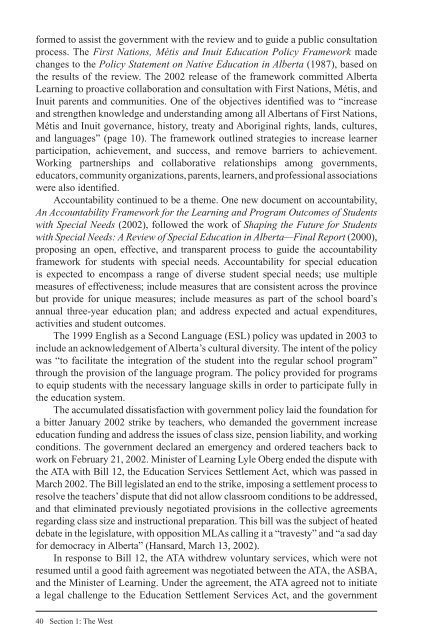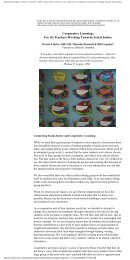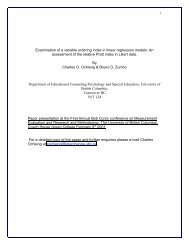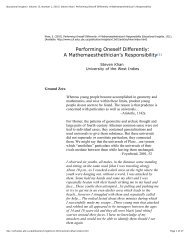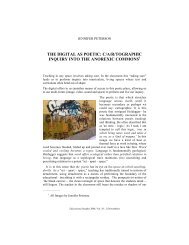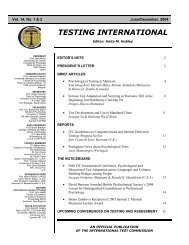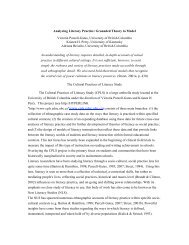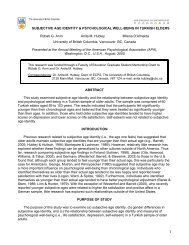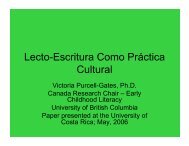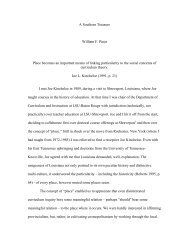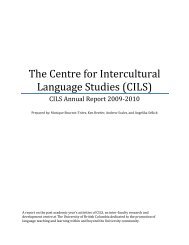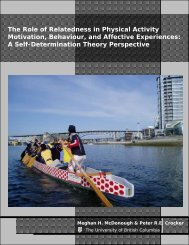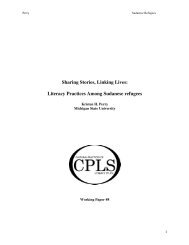The evolution of professionalism - Centre for Policy Studies in ...
The evolution of professionalism - Centre for Policy Studies in ...
The evolution of professionalism - Centre for Policy Studies in ...
Create successful ePaper yourself
Turn your PDF publications into a flip-book with our unique Google optimized e-Paper software.
<strong>for</strong>med to assist the government with the review and to guide a public consultation<br />
process. <strong>The</strong> First Nations, Métis and Inuit Education <strong>Policy</strong> Framework made<br />
changes to the <strong>Policy</strong> Statement on Native Education <strong>in</strong> Alberta (1987), based on<br />
the results <strong>of</strong> the review. <strong>The</strong> 2002 release <strong>of</strong> the framework committed Alberta<br />
Learn<strong>in</strong>g to proactive collaboration and consultation with First Nations, Métis, and<br />
Inuit parents and communities. One <strong>of</strong> the objectives identifi ed was to “<strong>in</strong>crease<br />
and strengthen knowledge and understand<strong>in</strong>g among all Albertans <strong>of</strong> First Nations,<br />
Métis and Inuit governance, history, treaty and Aborig<strong>in</strong>al rights, lands, cultures,<br />
and languages” (page 10). <strong>The</strong> framework outl<strong>in</strong>ed strategies to <strong>in</strong>crease learner<br />
participation, achievement, and success, and remove barriers to achievement.<br />
Work<strong>in</strong>g partnerships and collaborative relationships among governments,<br />
educators, community organizations, parents, learners, and pr<strong>of</strong>essional associations<br />
were also identifi ed.<br />
Accountability cont<strong>in</strong>ued to be a theme. One new document on accountability,<br />
An Accountability Framework <strong>for</strong> the Learn<strong>in</strong>g and Program Outcomes <strong>of</strong> Students<br />
with Special Needs (2002), followed the work <strong>of</strong> Shap<strong>in</strong>g the Future <strong>for</strong> Students<br />
with Special Needs: A Review <strong>of</strong> Special Education <strong>in</strong> Alberta—F<strong>in</strong>al Report (2000),<br />
propos<strong>in</strong>g an open, effective, and transparent process to guide the accountability<br />
framework <strong>for</strong> students with special needs. Accountability <strong>for</strong> special education<br />
is expected to encompass a range <strong>of</strong> diverse student special needs; use multiple<br />
measures <strong>of</strong> effectiveness; <strong>in</strong>clude measures that are consistent across the prov<strong>in</strong>ce<br />
but provide <strong>for</strong> unique measures; <strong>in</strong>clude measures as part <strong>of</strong> the school board’s<br />
annual three-year education plan; and address expected and actual expenditures,<br />
activities and student outcomes.<br />
<strong>The</strong> 1999 English as a Second Language (ESL) policy was updated <strong>in</strong> 2003 to<br />
<strong>in</strong>clude an acknowledgement <strong>of</strong> Alberta’s cultural diversity. <strong>The</strong> <strong>in</strong>tent <strong>of</strong> the policy<br />
was “to facilitate the <strong>in</strong>tegration <strong>of</strong> the student <strong>in</strong>to the regular school program”<br />
through the provision <strong>of</strong> the language program. <strong>The</strong> policy provided <strong>for</strong> programs<br />
to equip students with the necessary language skills <strong>in</strong> order to participate fully <strong>in</strong><br />
the education system.<br />
<strong>The</strong> accumulated dissatisfaction with government policy laid the foundation <strong>for</strong><br />
a bitter January 2002 strike by teachers, who demanded the government <strong>in</strong>crease<br />
education fund<strong>in</strong>g and address the issues <strong>of</strong> class size, pension liability, and work<strong>in</strong>g<br />
conditions. <strong>The</strong> government declared an emergency and ordered teachers back to<br />
work on February 21, 2002. M<strong>in</strong>ister <strong>of</strong> Learn<strong>in</strong>g Lyle Oberg ended the dispute with<br />
the ATA with Bill 12, the Education Services Settlement Act, which was passed <strong>in</strong><br />
March 2002. <strong>The</strong> Bill legislated an end to the strike, impos<strong>in</strong>g a settlement process to<br />
resolve the teachers’ dispute that did not allow classroom conditions to be addressed,<br />
and that elim<strong>in</strong>ated previously negotiated provisions <strong>in</strong> the collective agreements<br />
regard<strong>in</strong>g class size and <strong>in</strong>structional preparation. This bill was the subject <strong>of</strong> heated<br />
debate <strong>in</strong> the legislature, with opposition MLAs call<strong>in</strong>g it a “travesty” and “a sad day<br />
<strong>for</strong> democracy <strong>in</strong> Alberta” (Hansard, March 13, 2002).<br />
In response to Bill 12, the ATA withdrew voluntary services, which were not<br />
resumed until a good faith agreement was negotiated between the ATA, the ASBA,<br />
and the M<strong>in</strong>ister <strong>of</strong> Learn<strong>in</strong>g. Under the agreement, the ATA agreed not to <strong>in</strong>itiate<br />
a legal challenge to the Education Settlement Services Act, and the government<br />
40 Section 1: <strong>The</strong> West


